Stopping the slow decay from brain disease
Scientists from SMU and UTD have identified chemical compounds that slow nerve damage caused by brain diseases.
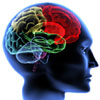
Researchers at Southern Methodist University (SMU) and The University of Texas at Dallas (UTD) have identified a group of chemical compounds that slows the degeneration of neurons, a condition that causes such common diseases of old age as Alzheimer’s, Parkinson’s and amyotropic lateral sclerosis (ALS).
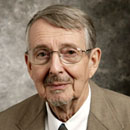 Edward R. Biehl |
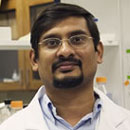 Santosh R. D’Mello |
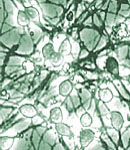 |
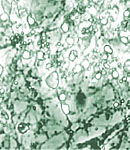 |
| At left: The image shows healthy neurons cultured from rats from a part of the brain called the cerebellum. At right: In degenerating neurons, the oval and bulbous cell bodies shrivel up and fragment, impeding connections with other neurons. | |
Study AuthorsEdward R. Biehl, Haribabu Ankati, Shashidhar Kumar Akubathini, Sukanta Kamila and Chandrani Mukherjee Department of Chemistry Santosh R. D’Mello, Michael Balderamos, Anish V. Patel and Lulu Wang Department of Molecular and Cell Biology, | |
Their findings are being featured in the current (November 2008) edition of Experimental Biology and Medicine.
SMU Chemistry Professor Edward R. Biehl and UTD Biology Professor Santosh R. D’Mello teamed to test 45 chemical compounds. Four were found to be the most potent protectors of brain cells, or neurons.
The synthesized chemicals, called “3-substituted indolin-2-one compounds” are derivatives of another compound called GW5074 which was shown to prevent neurodegeneration in a past report published by the D’Mello lab. While effective at protecting neurons from decay or death, GW5074 is toxic to cells at slightly elevated doses, which makes it unsuitable for clinical testing in patients. The newly identified, second generation compounds maintain the protective feature of GW5074 but are not toxic — even at very high doses — and hold promise in halting the steady march of neurodegenerative diseases like Alzheimer’s and Parkinson’s.
“Sadly, neurodegenerative diseases are a challenge for our elderly population,” D’Mello said. “People are living longer and are more impacted by diseases like Alzheimer’s, Parkinson’s and Amyotrophic Lateral Sclerosis (ALS) than ever before — which means we need to aggressively look for drugs that treat diseases. But most exciting now are our efforts to stop the effects of brain disease right in its tracks. Although the newly discovered compounds have only been tested in cultured neurons and mice, they do offer hope.”
The most common cause of neurodegenerative disease is aging. Current medications only alleviate the symptoms but do not affect the underlying cause — degeneration of neurons. The identification of compounds that inhibit neuronal death is thus of urgent and critical importance.
The new compounds may offer doctors an option beyond just treating the symptoms of neurodegenerative diseases. The development isn’t a cure, but doctors may be able to one day use compounds that stop cell death in combination with currently existing drugs that battle the symptoms of brain diseases. The combination of stopping the disease in its tracks while treating disease symptoms can offer hope to people suffering and the families impacted by these diseases.
# # #